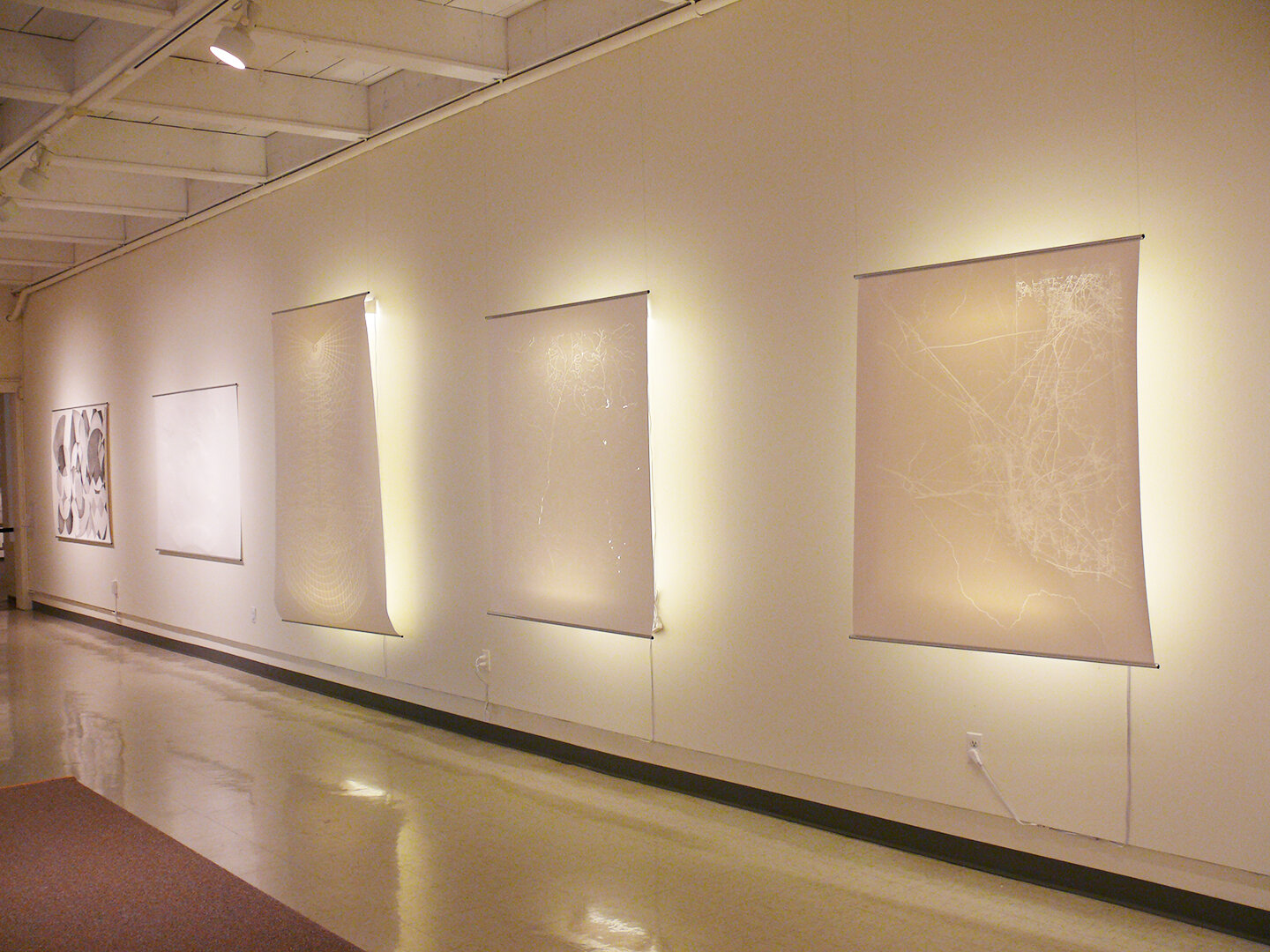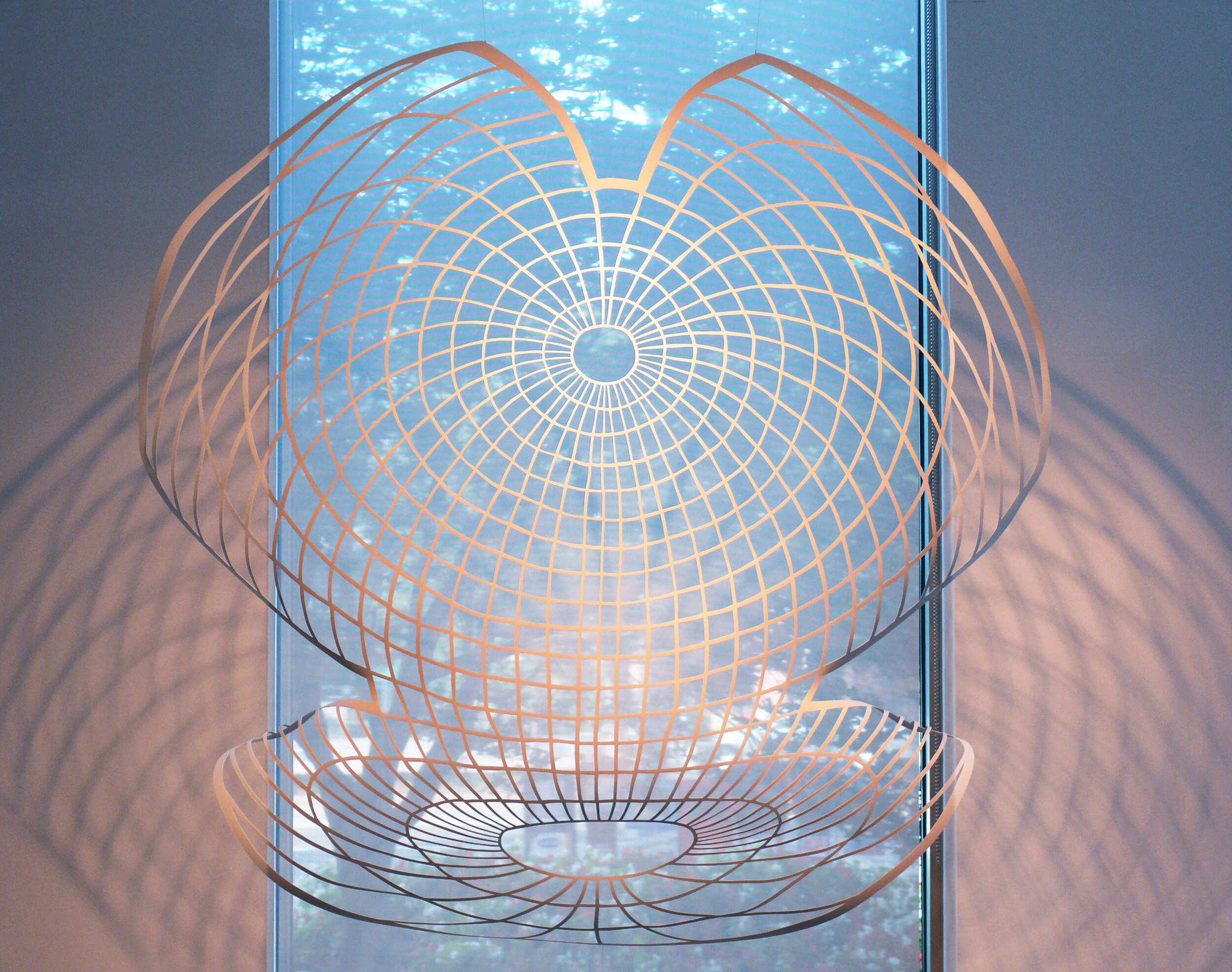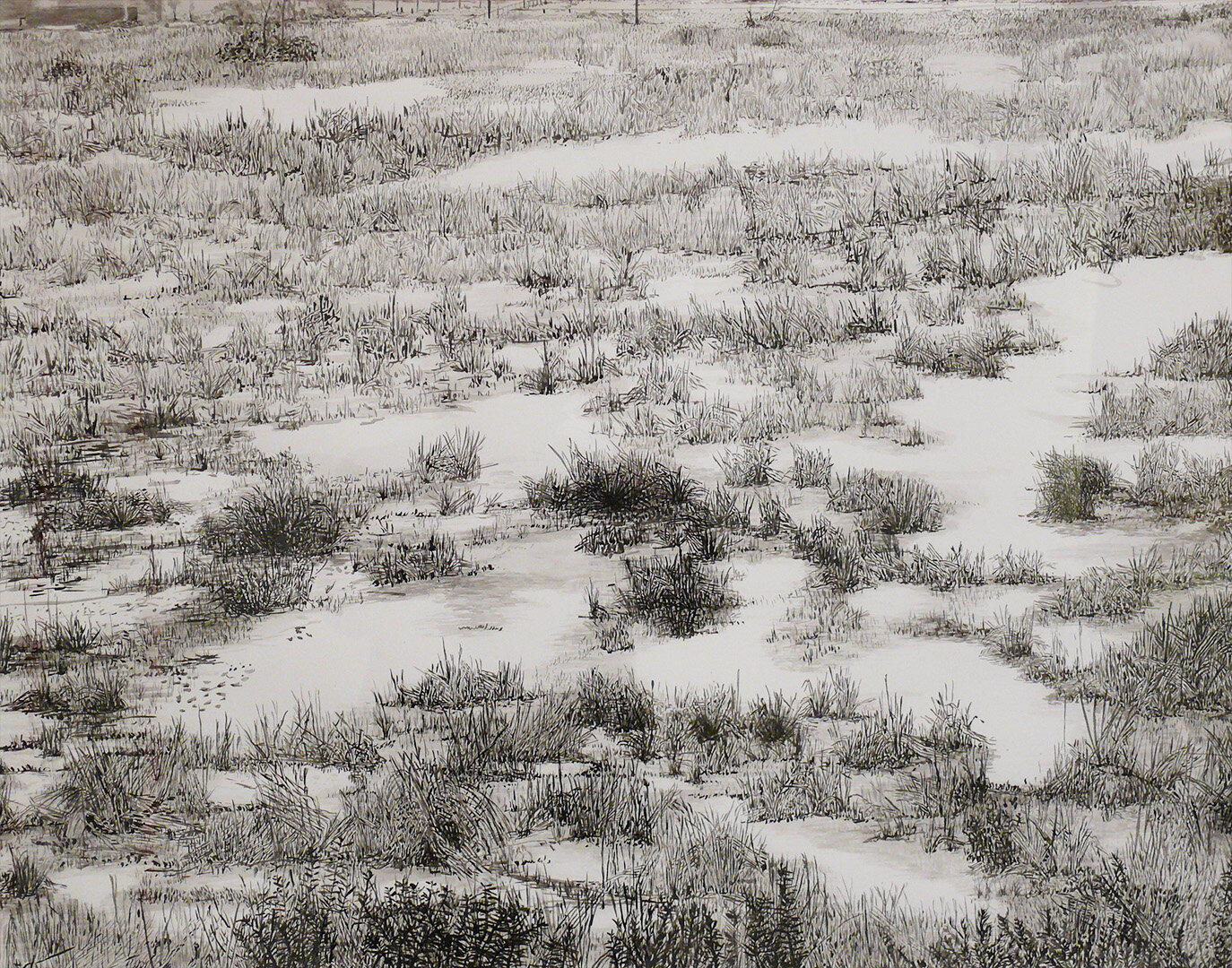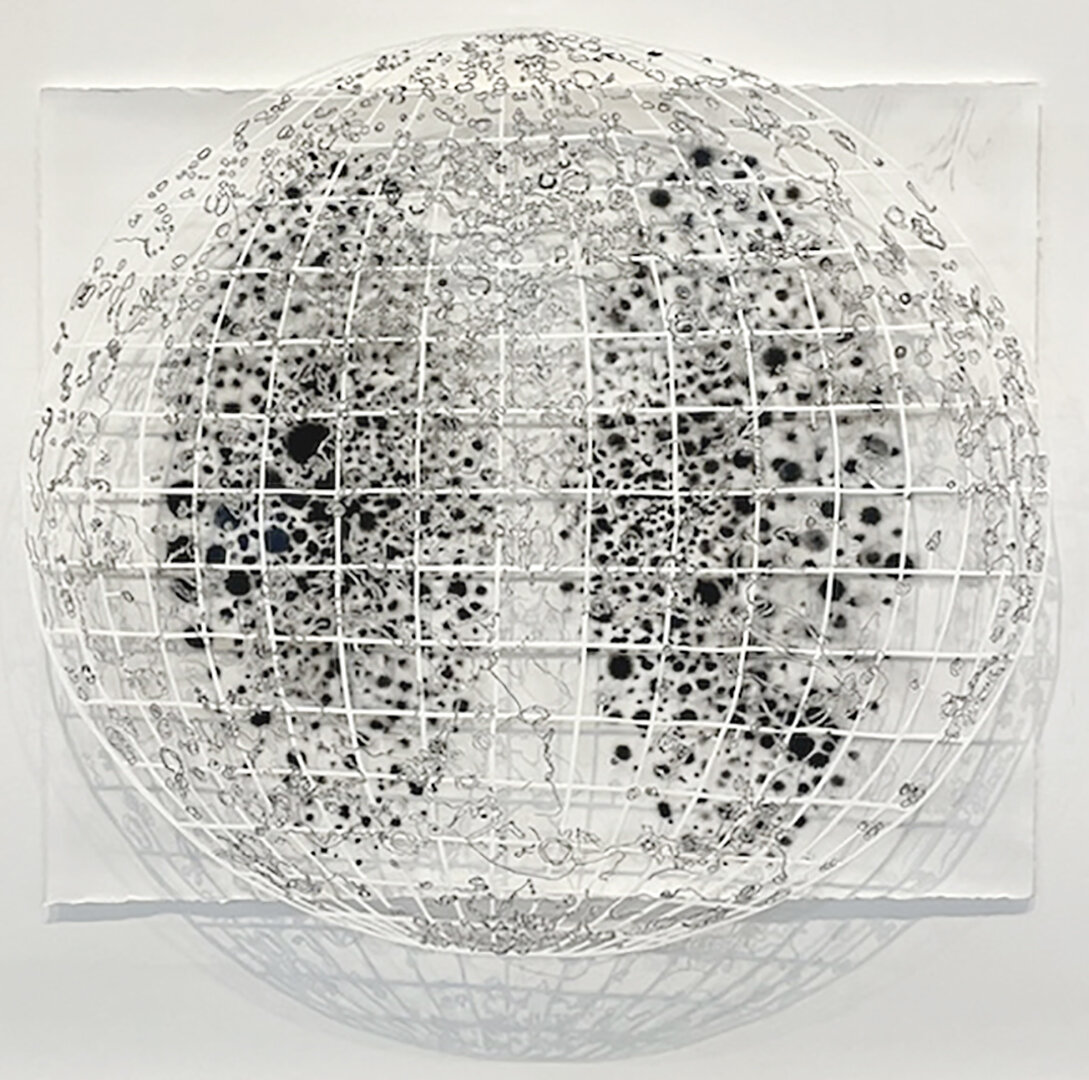AMoCA Collection Moon Craters with Northern/Southern Sky, ink on handcut paper, 25” x 27”, 2008.
RAIR | 2008-09
Renee Van der Stelt | Baltimore, MD
Renee van der Stelt was born in 1965 in Grand Rapids, Michigan and grew up in Ontario, and Iowa. She received an MA in art history in 1990 and an MFA in drawing in 1993 from the University of Iowa. She has received grants from the Pollock-Krasner Foundation, the Baltimore Office for the Promotion of the Arts, the Maryland State Arts Council and the TKF Foundation. In the past, she has worked in a variety of capacities as museum educator, registrar, curator and instructor of drawing.
Organizations she has worked for include the Walker Art Center; El Museo del Barrio; the Center for Art, Design and Visual Culture at the University of Maryland, Baltimore County; Cornell College in Iowa; and Redeemer College in Ontario. She has been a resident artist at the MacDowell Colony, Roswell Artist-in-Residence Program and Kaus Australis. She has worked at the Maryland Institute College of Art since 2009 and also serves as a visiting assistant professor of art at Washington College in Chestertown, Maryland.
https://www.reneevanderstelt.com
Renee van der Stelt's richly-detailed drawings and paper sculpture are interpretations of human interactions with the environment. Informed by pre-existing data-maps of natural resources, geographical surveys, and symbolic distinctions such as borders and lines of latitude-van der Stelt abstracts and overlaps the data as a means to illustrate how these systems work together. While informed by hard data, there is also a transformative quality to van der Stelt's work in which rivers and gas lines, borders and power lines flow together to form a glittery array of dots and patterns that are both delicate and graceful, and it is here the data blurs and yields to the beauty of the abstracted form. The final result is a blending of art and science, an exploration of the ways in which three-dimensional space is represented with its corresponding biases and limitations.
— Caroline Brooks, Assistant Director, Roswell Museum and Art Center
What is drawing and how can a line be moved off the page into three-dimensional space? How can the traditional definition of drawing as a mark on a page be expanded to reveal different conceptions of line and space? Do maps impart information, or reveal the biases of the maker? These questions have been central to my work in recent years.
In this exhibition, the work moves in three distinct directions. Several of the map-like drawings focus on resources available in this geographic region: specifically the location of water, oil, gas, and electric lines. The desire to understand complex systems of local and global human interaction with natural resources is what lies behind the abstracted drawings. When seen together, the images attempt to give the viewer a broader understanding of the region. A second direction for the work includes a group of large drawings that explore abstracted forms inherent in global projections developed by cartographers. These drawings, which can also be considered sculptures, suggest the globe and use lights to extend their form into space. Finally, six ink drawings reflect a more intimate response to the immediate landscape by 'mapping' the overlooked movement of varied grasses in the wind. The grasses, when dipped into ink create the drawings themselves through idiosyncratic movements.







